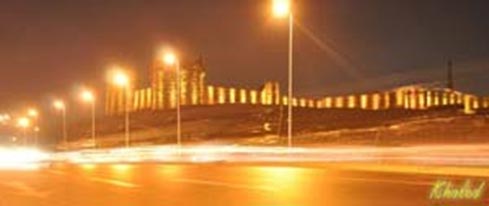The list of prominent stars with Arabic names or those derived from Arabic is a long one. The reason is simple – they reflect the contributions of Medieval Muslims, from Baghdad to Granada, to our understanding of the stars and the planets.
Almost as soon as they had established their capital at Baghdad in 762, the Abassid Caliphs cultivated the study of astronomy. After a period of translation, during which the works of Euclid, Archimedes and Ptolemy were studied, Islamic scholars made significant discoveries and contributions to the entire field.
The results of astronomical observations at centers in Baghdad and Damascus were collected in a work entitled: “The Verified Table in the 9th Century.” Among the books were many accurate notations like the calculation that the obliquity of the ecliptic; which matches almost exactly the modern figure.
Observations of the equinoxes made it possible to measure the length of the solar year with a high degree of accuracy. Muslim astronomers of the 9th Century even attempted the fundamental operation of measuring an arc of the terrestrial median – an operation that wasn’t to succeed until a thousand years later.
 This was done by assessing the distance between the point chosen as a part of departure by the observers and the spot where they were when the height of the pole had varied by one degree.
This was done by assessing the distance between the point chosen as a part of departure by the observers and the spot where they were when the height of the pole had varied by one degree.
In addition, the Baghdad school produced astronomical tables of the position of the planets and an exact determination of the precession of the equinoxes.
Other scholars determined the precession of the equinoxes with unprecedented accuracy, drew up tables showing the positions of the planets and, in 959, arrived at the figure of 33 20′ for the latitude of Baghdad – a margin of error of only 10″.
Abul-Wefa, who died in Baghdad in 998, recognized that the limits of the greatest latitude of the moon were variable. His attempts to account for what was clearly an imperfection in Ptolemy’s theory of the moon, led him to observe, in addition to the equation of the center of evection, a third irregularity – now known as the theory of variation.
Political turmoil and repeated invasions from the end of the 10th Century eventually led to the replacement of Baghdad by Cairo as the scientific capital of Islam. The astronomers of Cairo enjoyed the interest and protection of the city’s sovereigns. The library contained two celestial globes and 6,000 works on mathematics and astronomy.
The scientists conducted most of their observations from the summit of Mokattam Mountain, where Saladin Cairo Citadel now stands. The Egyptian astronomer, Ibn Jounis, who flourished during the reign of El Hakam II, prepared the Hakemite Table – which superseded all previous tables and was reproduced in all subsequent works on astronomy, including that of the 13th Century Chinese astronomer Co Cheou King.
Very little survives of the astronomical research of Spanish Muslims due to the systematic destruction of their manuscripts during the 15th Century. Hence, most of the Muslim astronomers of Islamic Spain are known to us only by their names. However, the few clues we do have as to the content of their work leave no doubt as to its importance.
For example, Arazachel, who lived in the 11thCentury, is known to have made 402 observations of the apogee of the sun. He also determined the annual value of the movement of the precession of the equinoxes at 50″, which is the exact figure given in modern tables.
Some historians of science believe, based on the astronomical works of Alfonso X of Castile and similar documents, that the Muslims of Spain had discovered the elliptical movement of the planets and the theory of the earth’s motion around the sun well before Johannes Kepler and Nicolas Copernicus.
The instruments used to achieve these results were primitive by modern standards and almost solely dependent on precise human observational skill; a fact that heightens rather than diminishes their achievement. The only method for precise measurement of time was the sundial.
The pendulum had not yet been applied to clocks, so these early Muslim astronomers lacked the degree of accuracy in time measurement necessary in astronomical observations. Angles were observed with quarter circles, some of which had radii over twenty-five feet in length, and with astrolabes.
In summary, the medireview Medieval Muslim astronomers left behind an impressive legacy. They introduced tangents into astronomical calculations; prepared tables showing the motions of stars; determined the obliquity of the ecliptic and its progressive decline; and precisely estimated the precession of the equinoxes and the length of the year.
In addition, they noted the irregularities of the greatest latitude of the moon and in the process discovered the third lunar anomaly (now known as a variation). Their accomplishments are written not only in the textbooks of astronomy, but across the sky in the names of the stars themselves.
This article was first published in 2009 and is currently republished for its importance.